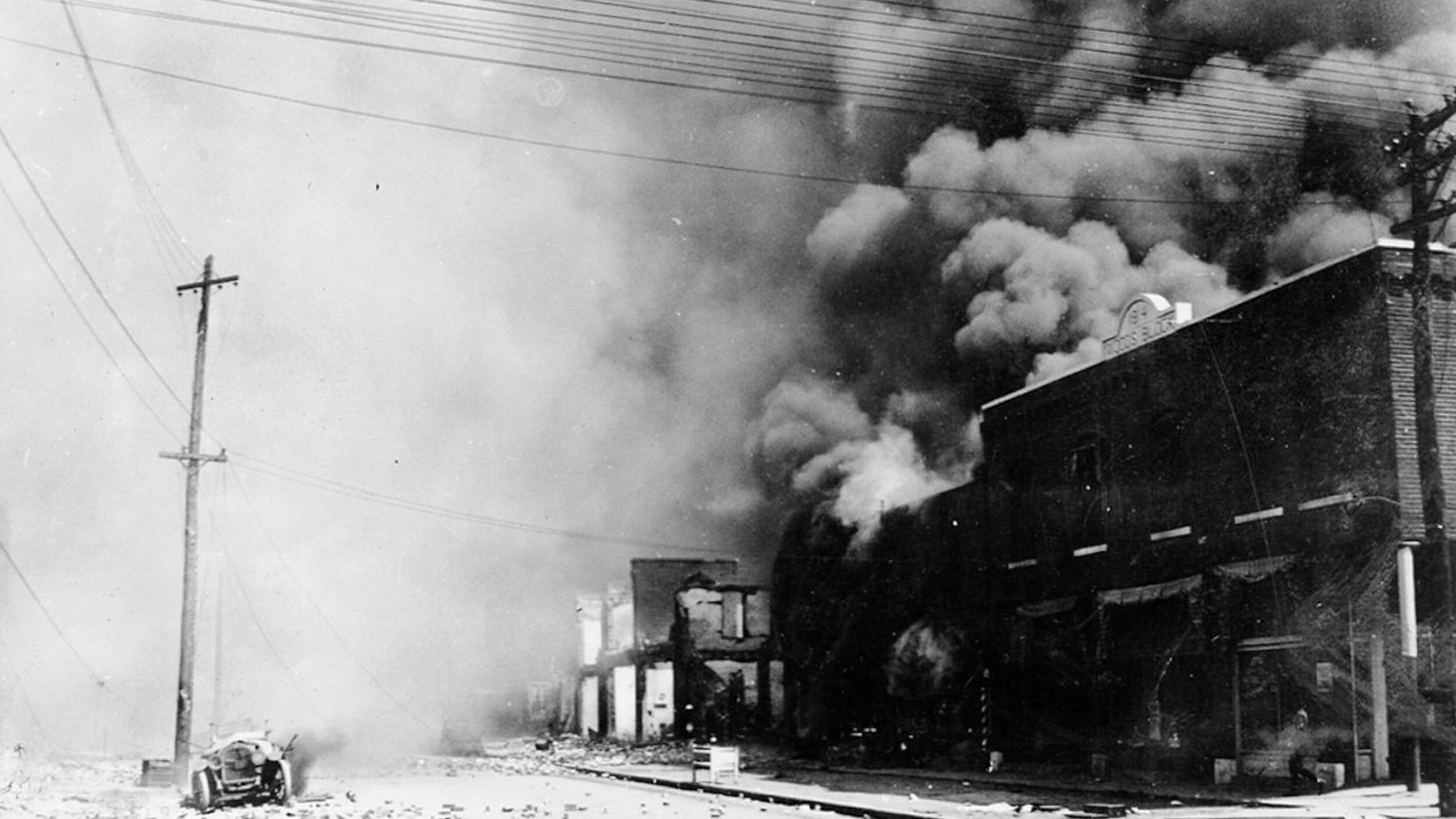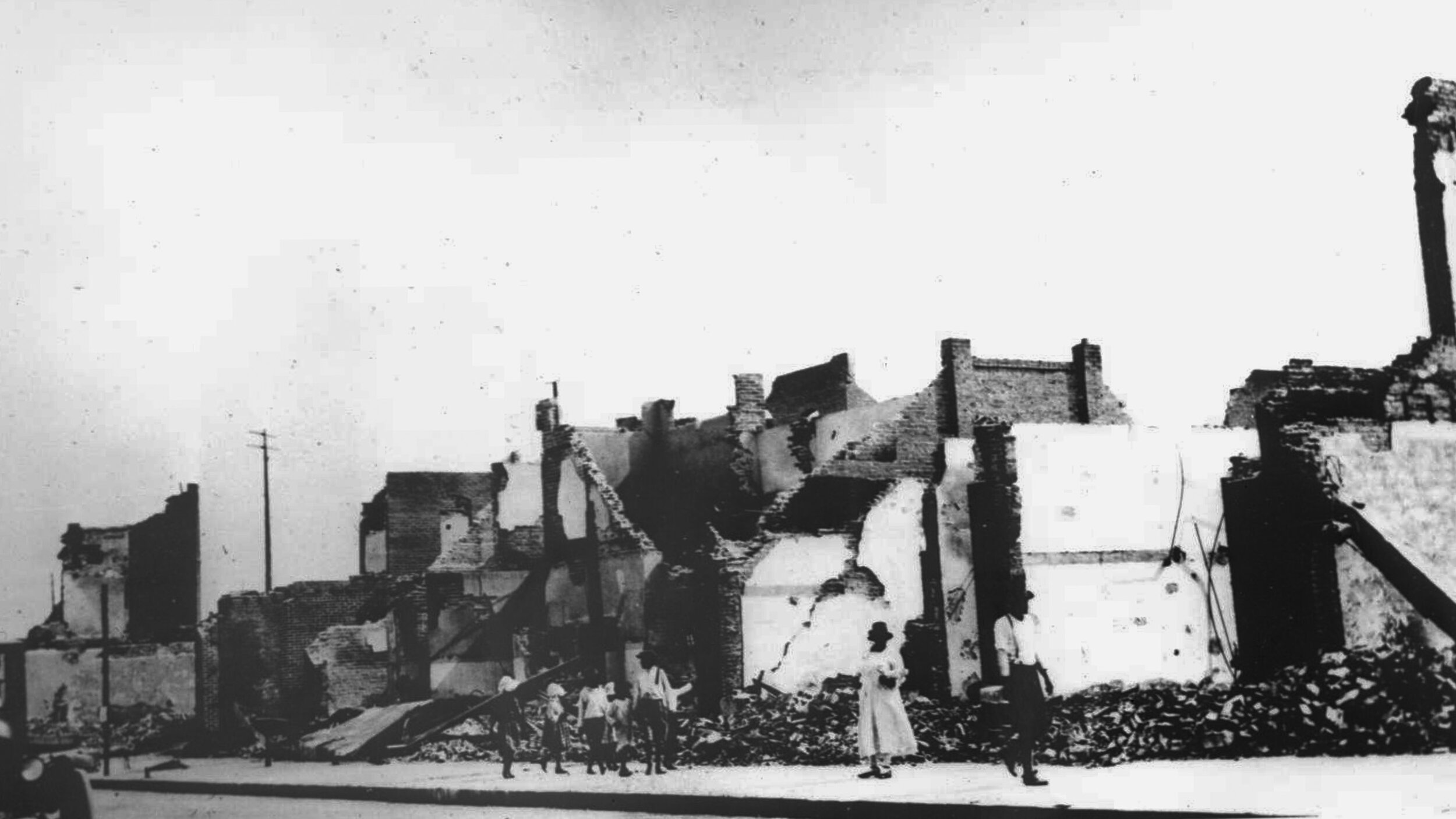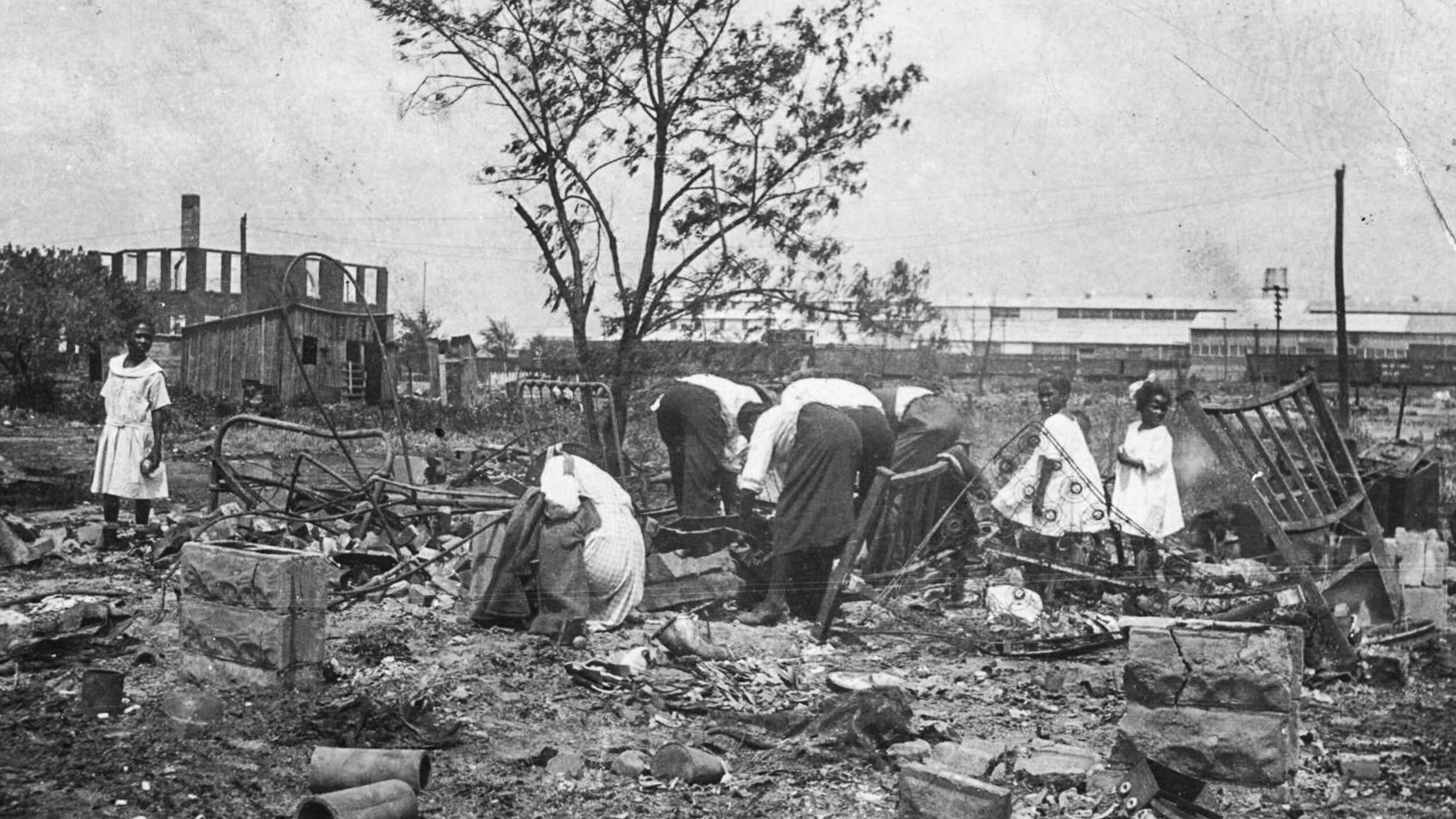In the decades that followed. Records of the event went missing, some fear they were destroyed. The mass graves have yet to be found. And many Black Tulsans believed they could face retribution for speaking out about the event. It wasn’t even taught in school until recently.
As a result, a lot of Tulsans still don’t know the history of Greenwood.
Local rapper Steph Simon was one of them. He grew up near Greenwood, and he went to middle school there. But it wasn’t until his 20’s when he stumbled upon a documentary about the massacre on Youtube. From there, he became obsessed with learning more about the true story of Tulsa. And in 2019, he released an album called Born on Black Wall Street where he reintroduces himself as “Diamond Dicky Ro” in homage to the young shoeshiner whom white mobs tried and failed to lynch on that night in 1921.
In 2011, an Oklahoman journalist named Lee Roy Chapman wrote an article for the publication This Land. Chapman’s story, The Nightmare in Dreamland, was a devastating re-telling of the life’s story of an Oklahoman legend--a “founder” of Tulsa named Tate Brady. Brady was well known as an oil tycoon and hotel owner who ran in the elite circles. However, buried by history was Brady’s legacy of violence and racial animus. He was a defender of the Confederacy, he was credibly accused of tarring and feathering some IWW union members, and for part of his life, he was in the Ku Klux Klan. And on the night of the massacre, Brady was there, acting as a night watchman. He reported seeing several dead black people in the streets in or around Greenwood.
With these revelations, a movement started to remove the Brady name from Tulsa. That movement succeeded partially, but the Brady name is still a part of the Tulsan landscape.
When Steph Simon shot the cover image for Born On Black Wall Street, he wanted to incorporate the symbolism of Tate Brady. So he went to Brady’s former mansion—a house modelled visually after the house of Robert E. Lee’s, with murals of the Confederacy painted inside and big stone columns out front. It sits on a hill overlooking historic Greenwood. And he stood on the front steps of the mansion only to see a childhood friend driving by. It was Felix Jones, an ex-NFL running back. The two grew up together. To Simon’s surprise, Jones revealed that he’d just bought the mansion. And he invited Simon inside.


















